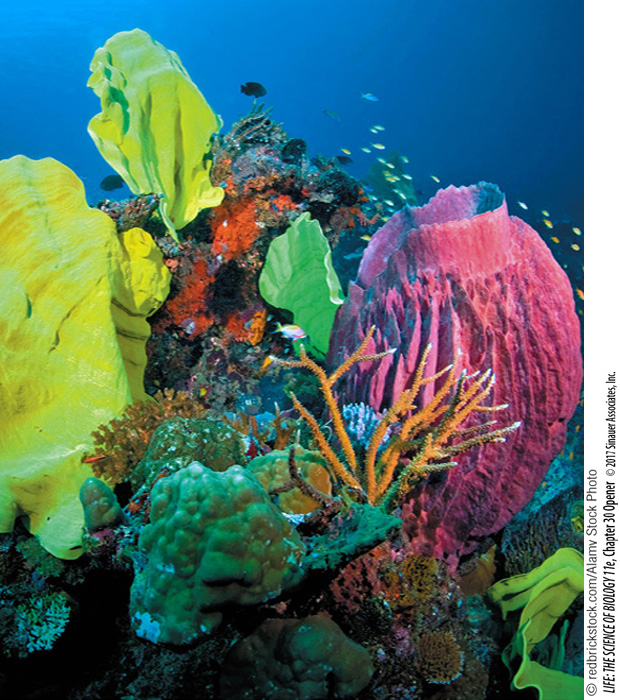Chapter Introduction
635
30
key concepts
30.1
Some Animal Characteristics Evolved More Than Once
30.2
Animals Diverged with Distinct Body Plans
30.3
Animals Use Diverse Forms of Movement to Feed
30.4
Animal Life Cycles Involve Trade-Offs
30.5
The Root of the Animal Tree Provides Clues to Early Animal Diversification
Animal Origins and
the Evolution of
Body Plans

investigating life
A Mysterious Animal Discovered in an Aquarium
In 1883 the zoologist Franz Schulze noticed something unusual in his Austrian laboratory: transparent, flattened organisms were crawling on the sides of his saltwater aquarium. These organisms, which Schulze had collected accidentally along with the sponges that were his primary interest, appeared to be animals, but they were unlike any animals previously described—
Further examination revealed that the new organisms were indeed animals. Structurally, however, they were among the simplest animals that Schulze—
In the 1960s more detailed studies confirmed the distinctive nature of Trichoplax. Even then, this odd animal continued to be known almost exclusively from aquariums. Finally, in the early 2000s biologists located natural populations of T. adhaerens growing on hard surfaces in tropical and subtropical coastal regions. A few additional closely related species have been discovered (although most have not yet been formally named). Collectively, these species are known as placozoans (Greek, “flat animals”).
The more biologists have studied Trichoplax, the odder this animal appears. It has the smallest genome of any animal studied to date. The mature stages lack body symmetry and have no mouth, gut, or nervous system. Is Trichoplax a relict representative of a group of animals that appeared early in animal evolution?
Which groups of organisms are at the root of the animal tree has been a subject of considerable investigation and debate. Several possible hypotheses of relationships have been explored with genomic analyses. The structural simplicity of Trichoplax is now considered by most biologists to be an evolutionary reversal from a more complex body form. Most genomic studies point to other groups of animals as forming the earliest split with the remaining species.
This chapter explores the earliest branches on the animal tree and shows how a few fundamental “body plans” have been modified to yield the remarkable variety of animal forms described in this and the following two chapters.
Which animal groups are involved in the earliest split in the animal tree?